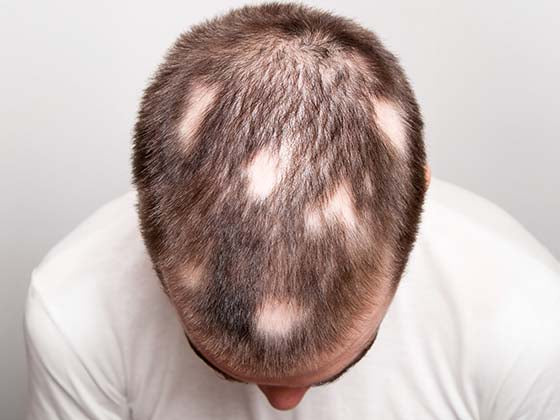Sake rice has gained popularity in skincare due to its many benefits for appearance. The byproducts and extracts from the fermentation of rice that are used to make sake are high in skin-beneficial elements. This blog explains how sake rice benefits your skin.
The Science Behind Sake's Skin Benefits

Sake's skin advantages are attributed to the fermentation process and bioactive substances produced during this traditional brewing technique. The scientific principles that make sake a skincare powerhouse include fermentation that boosts nutrients, kojic acid, amino acids for hydration, natural exfoliation via enzymes, antioxidant protection, anti-inflammatory properties, sebum regulation, and glycolipids for barrier support.
A Nutrient-Rich Elixir for Healthy Skin

The main constituents of sake and its skin benefits are:
-
Amino acids: Sake contains 17 key amino acids that are necessary for hydrating and repairing skin. They work to maintain the skin's moisture barrier, improve suppleness, and promote the production of collagen, giving the face a youthful, firm appearance.
-
Kojic acid: It is produced during the fermentation process, lightens dark spots, evens out skin tone, and gives skin a healthy glow. It is a natural alternative to harsh chemical brighteners, making it suitable for sensitive skin.
-
Ferulic acid: It is an antioxidant included in sake that safeguards against free radical damage and enhances the efficacy of other antioxidants such as vitamins C and E. This diminishes fine lines and wrinkles, dullness, resulting in a more youthful complexion.
-
Vitamins and minerals: Increase cell metabolism, improve skin texture, and decrease dryness. Strengthen the skin's barrier and reduce inflammation to protect against environmental stressors.
-
Natural enzymes: Sake enzymes function as mild exfoliants, removing dead skin cells to reveal a smoother texture and brighter complexion without causing discomfort.
-
Organic acids: Sake's lactic acid concentration helps to regulate the pH of the skin and control sebum production. This keeps pores clean, minimizes acne, and improves skin texture.
Fighting Skin Damage with Antioxidant Power

Combating skin damage with antioxidants is among the most effective methods for preserving healthy, youthful skin. Antioxidants counteract free radicals—unstable chemicals that harm skin cells and expedite aging. Sake, containing a distinctive blend of antioxidant-rich chemicals, provides substantial protection and restoration for the skin. This is the mechanism of its antioxidant efficacy:
Environmental Factors: UV rays, pollution, and toxins generate free radicals.
Oxidative Stress: Overproduction of free radicals overwhelms the skin's defenses, resulting in:
-
Collagen breakdown
-
Fine lines and wrinkles
-
Hyperpigmentation
-
Loss of elasticity
Antioxidants destroy free radicals, thereby preventing and reversing damage.
Sake's Skincare Superpowers Unveiled

-
Brightens and evens skin tone: Kojic acid, a superpower. A natural by-product of the fermentation process, kojic acid inhibits melanin production, reducing dark spots, hyperpigmentation, and uneven skin tone.
-
Intense hydration for supple skin: Amino Acids, a Superpower. Sake is rich in amino acids, which are humectants that attract and retain moisture.
-
Gently exfoliates for smooth texture: Natural Enzymes, a Superpower. The enzymes in sake break down dead skin cells without irritation, promoting skin renewal and revealing a smoother surface.
-
Fights premature aging: Antioxidants (Ferulic Acid, Vitamins B, and E). Sake’s antioxidants neutralize free radicals, prevent oxidative stress, and boost collagen production.
-
Calms irritation and redness: Anti-inflammatory properties are a superpower. Amino acids and minerals in sake soothe inflamed skin, making it ideal for conditions like acne, rosacea, or sensitivity.
-
Regulates oil and prevents breakouts: Astringent Properties as a Superpower. Sake’s mildly acidic pH helps balance sebum production and keep pores clear.
-
Strengthens skin barrier: Glycolipids and nutrients are a superpower. Sake reinforces the skin’s protective barrier, preventing moisture loss and shielding it from environmental aggressors.
-
Enhances skin glow: The Fermented Goodness superpower. The fermentation process boosts the bioavailability of nutrients, allowing deeper penetration and better absorption. An overall luminous and healthy appearance.
Hydrated, Plump Skin, Naturally

Achieving hydrated, plump skin naturally is the key to a youthful and glowing complexion. Sake, with its nutrient-rich composition, is a powerful ally in enhancing skin hydration. Here’s how sake and its natural components help you achieve that coveted dewy look:
-
Packed with Amino Acids: Sake contains 17 essential amino acids that act as humectants, attracting and retaining moisture in the skin. Locks in hydration, improves elasticity, and leaves skin feeling soft and plump.
-
Boosts the Skin Barrier: Sake strengthens the lipid barrier with its glycolipids and natural oils, preventing transepidermal water loss (TEWL). Keeps skin hydrated longer and resilient against environmental stress.
-
Natural Hydrating Sugars: Sugars produced during the fermentation process help maintain the skin’s moisture levels. Enhances the skin’s ability to retain water for a smoother appearance.
-
Lactic Acid for Balance: The gentle exfoliation from lactic acid removes dead skin cells, allowing hydration to penetrate deeper. Refines skin texture and enhances moisture absorption.
Gentle Exfoliation for a Smoother Complexion

Gentle exfoliation is essential for a smoother, brighter complexion, and sake provides an ideal solution with its natural enzymes and acids. Unlike harsh scrubs or chemical exfoliants, sake’s components work delicately to remove dead skin cells while nourishing and hydrating the skin. Here's how you can achieve a smoother complexion with sake-based exfoliation:
-
Removes Dead Skin Cells: Prevents buildup that can dull your complexion.
-
Unclogs Pores: Reduces the risk of acne and blackheads.
-
Boosts Cell Renewal: Promotes the growth of fresh, healthy skin cells.
-
Improves Product Absorption: Allows skincare products to penetrate deeper for better results.
Defying Age with Sake's Anti-Aging Effects

Defying age naturally is a goal for many, and sake is a powerhouse ingredient that helps you achieve youthful, radiant skin. Thanks to its rich blend of amino acids, antioxidants, and natural acids, sake offers multi-faceted anti-aging benefits. Let’s explore how this traditional elixir combats the signs of aging and restores your skin’s vitality:
-
Boosts collagen production: Amino acids are a key component. Sake is rich in amino acids that support collagen synthesis, improving skin firmness and elasticity. Reduces sagging and gives skin a lifted appearance.
-
Neutralizes free radicals: Ferulic acid and antioxidants are key components. These powerful antioxidants protect against oxidative stress, a major cause of premature aging. It prevents fine lines, wrinkles, and dullness while repairing UV damage.
-
Stimulates cell renewal: Lactic acid is a key component. Naturally occurring lactic acid in sake gently exfoliates and speeds up cell turnover. It smoothens skin texture and restores radiance.
-
Reduces pigmentation and age spots: Kojic acid is a key component. Kojic acid, a by-product of sake fermentation, inhibits melanin production. It lightens dark spots and evens out skin tone for a more youthful glow.
-
Improves skin hydration: Natural sugars and moisturizers are key components. Sake’s humectants retain moisture in the skin, plumping fine lines and reducing dehydration. Leaves skin soft, supple, and dewy.
-
Strengthens skin barrier: Nutrients and minerals are essential components. Sake fortifies the skin barrier, preventing moisture loss and protecting against environmental damage. Keeps skin resilient and healthy over time.
Incorporating Sake into Your Routine

Incorporating sake into your beauty routine is a wonderful way to make use of its natural anti-aging, moisturizing, and brightening properties. Whether you like ready-made products or make your own, sake can easily integrate into your beauty routine. Here's a tutorial to help you get started:
Morning routine with sake
-
Step 1: Sake-Infused Cleanser: Removes impurities without stripping moisture. Use a gentle sake-based cleanser to prep your skin for the day.
-
Step 2: Sake Toner: Balances skin’s pH, hydrates, and preps for serums. Dilute sake with rose water and apply with a cotton pad.
-
Step 3: Vitamin C + Sake Serum: Vitamin C combined with sake improves antioxidant protection and brightness. Apply a lightweight serum containing sake and active compounds such as vitamin C.
-
Step 4: Sunscreen: Sunscreen protects exfoliated and brightened skin from UV damage.
Evening Routine with Sake
-
Step 1: Double Cleanse with Sake: Gently remove makeup and pollutants. Start with an oil cleanser followed by a sake-infused foam or gel cleanser.
-
Step 2: Sake Exfoliating Toner (2–3 Times a Week): Encourages cell turnover and smooths texture. Combine sake with apple cider vinegar and distilled water for a mild exfoliating toner.
-
Step 3: Sake Hydrating Mask (Weekly): Deeply nourishes and moisturizes the skin. Combine sake, yogurt, and honey to make a relaxing mask.
-
Step 4: Anti-Aging Night Cream: Repairs and rejuvenates skin overnight. Use a cream infused with sake’s antioxidants and amino acids.
DIY Sake Skincare: Easy Home Remedies

Using sake in DIY skincare is a fun and effective way to pamper your skin naturally. Sake’s amino acids, enzymes, and antioxidants make it a versatile ingredient for addressing hydration, brightening, and anti-aging. Here are some easy-to-follow home remedies using sake to level up your skincare game:
-
Brightening sake toner: Ingredients are 2 tbsp sake, 1 tbsp rose water and 1 tsp aloe vera juice. Mix the ingredients in a small spray bottle. After cleansing, apply with a cotton pad or spritz directly onto your face. Follow with a moisturizer.
-
Hydrating sake face mask: Ingredients are 2 tbsp sake, 1 tbsp plain yogurt (for lactic acid) and 1 tsp honey (for moisture). Mix all ingredients until smooth. Apply face mask evenly to your face and leave on for 15–20 minutes. Rinse with lukewarm water and pat dry.
-
Sake enzyme exfoliant: Ingredients are 1 tbsp sake1 tbsp rice flour (for a mild scrub effect) and 1 tsp coconut oil (optional, for hydration). Combine ingredients into a paste. Massage onto damp skin in circular motions for 1–2 minutes. Rinse thoroughly.
-
Sake anti-aging serum: Ingredients are 1 tbsp sake, 1 tsp rosehip oil (rich in vitamin A) and 3 drops of vitamin E oil. Mix well and store in a dark glass bottle. Apply a few drops to clean skin before bed.
-
Sake spot treatment: Ingredients are 1 tsp sake, A pinch of turmeric (natural brightener) and 1 tsp lemon juice (optional, for stubborn spots). Mix into a smooth liquid. Apply directly to dark spots with a cotton swab. Leave on for 10 minutes, then rinse.
Choosing the Right Sake for Your Skin

Choosing the right sake for your skincare routine is important, as different types of sake may have slightly varying compositions based on their production methods. When it comes to skincare, the quality and ingredients of sake matter more than the brand itself. Here’s how to select the best sake for your skin, depending on your needs:
-
Opt for Junmai or Junmai Daiginjo Sake: These types of sake are made from high-quality rice and have a more concentrated, refined composition, making them ideal for skincare. Made with rice, water, yeast, and koji mold. It’s free from added alcohol or sugars, ensuring purity. The highest grade, with the rice polished to at least 50%, resulting in a smoother, more delicate sake that's ideal for sensitive skin.
-
Choose Sake with High Amino Acid Content: Sake’s amino acids, which are essential for collagen production, help improve skin elasticity and hydration. Sake with a rich concentration of amino acids like glutamic acid, which has hydrating properties, and proline, which supports collagen production.
-
Sake with Low Alcohol Content: High alcohol content can be drying or irritating for the skin, especially for those with sensitive skin. Sake with an alcohol content of around 14–16%. This will provide the benefits of sake without causing dryness or irritation. Opt for low-alcohol sake (like a "Honkaku" style sake) for sensitive or dry skin.
-
Consider the Fermentation Process: Sake is fermented with yeast and koji mold, both of which contribute enzymes and antioxidants to the final product. These enzymes are key for exfoliating, brightening, and hydrating the skin. Sake made with traditional fermentation methods may offer more potent skincare benefits. It often contains more naturally occurring enzymes that can exfoliate dead skin cells gently.
-
Look for Additives-Free Sake: For skincare, it’s crucial to choose sake that’s free from artificial preservatives, sugars, or flavor additives. Pure, natural sake provides the most skin-loving benefits. Sake that’s labeled "no additives" or "pure rice sake" (sometimes labeled as "Nama Sake").
-
Consider Rice Wine with a Low Acidity Level for Sensitive Skin: Some sakes can be slightly acidic, which helps in exfoliating dead skin cells. However, if you have sensitive skin, you should choose sake with lower acidity to avoid irritation. Sake with a lower acidity is preferable if your skin is prone to sensitivity or conditions like rosacea.
-
Rice Water or Sake Infusions: Some skincare products use sake or rice water, which is rich in nutrients, antioxidants, and amino acids from rice fermentation. If you want a more potent effect, choose sake-infused products or rice water formulas. Look for rice water skincare products or sake-based beauty masks for a more convenient, potent infusion of the sake benefits.
Patch Testing for Safe Sake Skincare

Patch testing is a crucial step when introducing new ingredients, such as sake, into your skincare routine. While sake is generally considered safe for most skin types, it’s always best to test for potential allergic reactions or irritation, especially if you have sensitive skin. Here’s how to patch test sake skincare products or DIY remedies effectively:
-
Step 1: Choose a small area of skin: The inner forearm or behind the ear is typically a good area for patch testing. These areas are more sensitive than the face, which makes them ideal for detecting irritation.
-
Step 2: Apply a small amount of product: If you're using a store-bought sake-infused product, apply a small amount (1–2 drops) to the chosen area. For DIY remedies, apply a tiny amount of the mixture (such as a sake mask or toner) to the test area.
-
Step 3: Leave it for 24 hours: Allow the product to sit on the skin for 24 hours without washing it off. This will give your skin enough time to react. Check for any signs of irritation such as redness, itching, swelling, or burning sensations.
-
Step 4: Evaluate the results: If no irritation occurs (i.e., no redness, rash, or discomfort), it’s generally safe to proceed with using the product on your face or body. If any irritation, redness, or itching occurs, wash the area with mild soap and water. It’s best to avoid using that particular product on your skin and consult a dermatologist if the reaction is severe.
Sustainable Beauty with Ancient Wisdom

Sustainable beauty through ancient knowledge entails reconnecting with natural, time-tested traditions that respect both our skin and the environment. Choose plant-based, eco-friendly, and minimalist beauty methods to attain healthy skin while also contributing to a healthier earth.
















